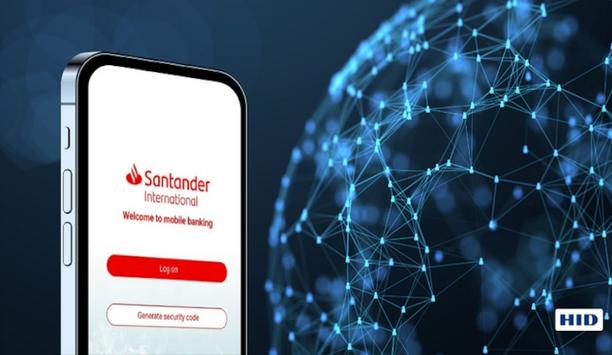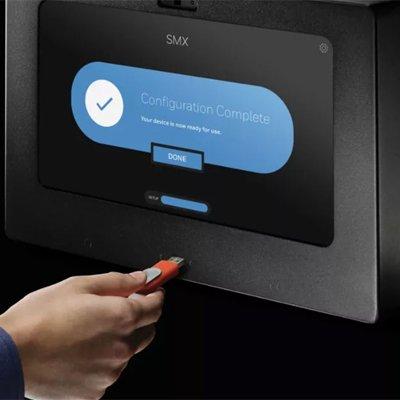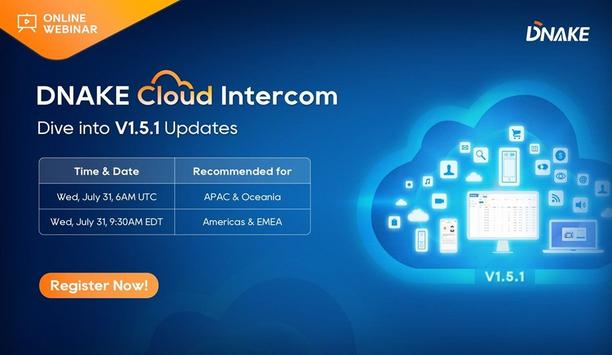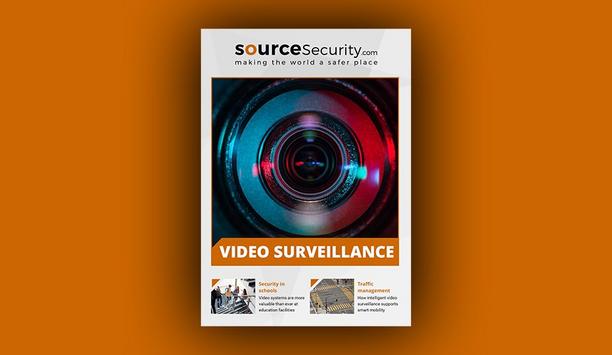CCTV cameras News
Until recently, data laws have differed from one country to the next. This meant that for those organisations conducting business or protecting assets abroad, they needed to localise both their infrastructure and policies dependant on the country they were operating in. However, with the impending arrival of the EU GDPR (General Data Protection Regulation), which comes in to force on the 25th May this year, all of that will need to change. Data management in CCTV surveillance Surprisingly, des...
How much does a security system cost? We all know that total costs associated with systems are substantially higher than the “price tag.” There are many elements, tangible and intangible, that contribute to the costs of owning and operating a system. Taking a broad view and finding ways to measure these additional costs enables integrators and users to get the most value from a system at the lowest total cost of ownership (TCO). However, measuring TCO can be easier said than done. We...
Leadership roles are changing inside enterprise companies, where higher profiles of roles like CIO and CISO are blurring the lines separating legacy security departments from the larger enterprise. The role of security – protecting the company – now overlaps with broader concerns such as business optimisation. The changes are impacting how technology is used; what was once considered a “security system” can now impact the company in larger ways. It’s not just prot...
In 2017 we foresaw the emergence of video surveillance as a service. We also predicted an increase in intelligence in cameras, greater adoption of analytics, and more content aggregation. We saw biometrics taking increasing importance as a measure to prevent massive data breaches. We took on more projects that were larger in scope and size. More implementations involved higher-resolution cameras and longer retention times leading to greater adoption of multi-tier storage. Looking ahead to 2018...
Consumer confidence is its highest in a long time, and the unemployment rate is very low. This confidence in the economy is spurring investment in new facilities and expansion of facilities, and that’s driving security industry growth. Workplace violence issue Against this backdrop, another factor is on the rise and it’s not good: More violence in the workplace, possibly more than ever before. This is causing a shift in security strategy: the C-suite is increasingly less intereste...
Cameras capable of recording video at 60 frames per second (fps) are becoming widely available in the security industry. It’s important to understand what 60-fps brings to the table for the security industry and how to leverage the technology for particular scenarios. Capturing video at 60-fps represents a unique application. System integrators typically use much lower frame rates, ranging from 7- to up to 30-fps. The potential for an incident might only represent 1%, or less, of the tim...
Demand for video surveillance equipment continued to grow rapidly in 2017 with price competition remaining intense. The important trends in 2017 were in three areas: Multi-sensor technology, artificial intelligence/deep learning, and stronger integration with VMS partners. Security professionals are turning to emerging technologies such as multi-sensor panoramic cameras, which can dramatically increase situational awareness, improve operator efficiency, and are more cost-eff...
The demand for security consultancy services has increased as recent terror events have highlighted the need for effective and proportionate mitigation measures. Security training has seen an increase in demand, especially for technical courses in the areas of access control and CCTV. Security management training has also risen, except in the oil and gas sector where demand dropped significantly; this is attributed to the suppressed oil price. However, recently there are sig...
The past year has proved to be a year full of many changes both within our industry and for Robotic Assistance Devices (RAD). While we have experienced increased adoption of artificial intelligence-based solutions, the industry has been challenged with an ever-evolving technology landscape. Protecting enterprise organisations from both cyber and physical security threats will be an ongoing challenge the industry must grapple with. Greater adoption of robotic solutions To...
Economic recovery has enabled companies to continue global expansion efforts. We’re seeing substantial growth with our enterprise clients – 45% year-over-year increase – and sound growth with our local markets – 14% year-over-year increase. Both existing and new clients are upgrading their current security infrastructure and investing in the development of long-term solutions. Convergence of physical security and IT security continues to trend. Threat...
In the wake of Securing New Ground event in New York City in 2016, the Security Industry Association (SIA) published an inaugural “Security Megatrends” report that assessed for major “megatrends” for the security industry in 2017. 10 major megatrends Only days ago, SIA published “Security Megatrends: The 2018 Vision for the Security Industry,” again identifying 10 major megatrends to watch in the year ahead. SIA saw a great deal of activity unfold in 2017, a...
This year has unfolded generally as predicted. Complete solutions have enabled IP video to further penetrate the small to medium business markets. IP convergence opened up new fast-growing markets for IP intercoms and IP audio systems. The preponderance of IoT devices has driven cybersecurity efforts to new heights. In addition, lower prices, along with the increasing investment needed in R&D to keep pace with rapidly changing technology, have led to market consolidation. IoT creates oppor...
The year 2017 has been a banner one for physical security with the advent of increasingly sophisticated technology to manage threats. As we approach 2018, the field widens with regard to solutions that will expand the capability of security teams seeking ways to shore up their risk exposure and expand situational intelligence. Here’s a recap of milestones and areas we see as important in the new year. Technology integration Technology integration played an even greater role in the market...
Throughout 2017, customers have been increasingly looking for technological answers to a plethora of their business needs, and the surveillance industry has seen a rapid boost because of this. In particular, we’ve seen more organisations harness video to fulfil much more than just their security requirements. Combining physical and cyber security Businesses are now using surveillance to address areas such as health and safety, sales and marketing as it fast becomes more of a business opp...
In 2017 we saw a lot of new construction projects, and many existing buildings upgraded their security systems to include high-resolution cameras and better-quality recording systems. Because the economy is stronger, many businesses and municipalities increased their security budgets for large-scale and public projects due to terrorism threats in public places. Smart cities became more popular One of the bigger trends we saw in 2017 is the growing popularity of smart cities...
As we take a look back on 2017, there are a number of trends we need to highlight — all of which have redefined our industry. Cybersecurity played a huge role in physical security, driven by the increase in the use of the Internet of Things (IoT) and the overall interconnectivity between devices and expanding cloud technologies. Although exceptionally beneficial, the IoT also brings with it an increased amount of cyber vulnerabilities. As security systems are using the Internet more and m...
The security industry was strong and healthy in 2017. High-end security markets, such as the power distribution and critical infrastructure sectors, saw continued growth and opportunity for perimeter security technologies like thermal imaging, video analytics and radar. For the low-end security markets, there was significant competition from Chinese manufacturers. Despite this challenge, we saw continued growth from premium Western security manufacturers in 2017 in which many introduced cost-ef...
Video surveillance solutions have come a long way in recent years, including this past one, with IP-based imaging solutions delivering incredible resolution and detail to provide higher levels of situational awareness, information and overall security. In 2017, we also witnessed how video surveillance serves an emerging need and desire to acquire greater business intelligence. Today’s cameras and VMS are able to truly deliver on the promise of IP video without requiring end users to break...
Rapid changes in the physical security market this year have largely overshadowed one arena where change has slowed down in 2017 – mergers and acquisitions (M&A). Although there were no “mega-mergers” as in years past (such as Axis-Canon and Johnson Controls-Tyco, M&A activity still made headlines last year on SourceSecurity.com. In 2017, we wrote about M&A news involving companies such as HID Global, Eagle Eye Networks, ADT, and Honeywell. ...
Over the past year, there was an unprecedented rise in drone incidents. Drones were unwelcome at and threatening the physical and cybersecurity of defence organisations, stadiums, corporations, and data centres, among organisations with critical infrastructure. Legislation is only just emerging now, and laws protecting airspace are hard to enforce, especially if a pilot is unaware of the risks of their flight or is flying with malicious intent. Laws can be circumvented, but detection technology...
The end of the year is a great time to take stock of one’s accomplishments during the year, and to reflect on successes and failures, where we are and where we’re going. 2017 brought a lot of change to the physical security market, but were the changes positive or negative? Our Expert Panelists tend to be a thoughtful and reflective group, so we wanted to get their thoughts and insights at year-end about 2017 in the security market. We asked this week’s Expert Panel Roundtable:...
2018 will start to see facial recognition and other biometrics used in a combination of ways, but I’d like to look even further into the future. I believe that facial recognition will be utilised on a large scale and that it will be very hard to enjoy the enhanced speed and simplicity of travel and financial transactions of the future without relying on biometrics. Biometric ticket and passport For example, when you travel to another country your face will be your ticket and passport.&n...
An increase in spending on security, more focus on data security, higher demand for integrated solutions, and steady progress to move beyond the pixel race were key trends in 2017. As we look forward to 2018, we will continue to see development in these areas as well as greater impact of the Internet of Things (IoT) on the video security market. Potential of video security data More and more, users are realising that the real issues in video security are not about pixel counts. Managing incre...
Last year, Genetec predicted that cybersecurity would be taken much more seriously as the Internet of Things (IoT) opened more doors for hacking and network take overs. We also predicted that that there would be an increase in the adoption of Software as a Service (SaaS), expanding choice and convenience from new ownership models via hybrid (on-premises and Cloud) and Cloud-only models. Cyber Accountability awareness 2017 was also a year of awareness about ‘Cyber Accountability’....
While the security industry continues to grow, increased commoditisation and the rise of low-cost cameras that are vulnerable to cyber-attacks has forced our industry to take a harder look at cybersecurity. Systems integrators and customers are increasingly aware of the dangers posed by these devices, and demand more accountability from manufacturers. This is good news for innovative manufacturers like Hanwha who have always put cybersecurity at the core of their product development. Because we...
The term “smart city” gets thrown around a lot nowadays, but as different technologies that strive to be defined in this way are adopted by different countries globally, the meaning of this phrase gets lost in translation. The simplest way to define a “smart city” is that it is an urban area that uses different types of data collecting sensors to manage assets and resources efficiently. One of the most obvious types of “data collecting sensor” is the video ca...
In 2017, DITEK saw how power surges from the many natural disasters that took place damaged many businesses. In a natural disaster, or even everyday business operations, a facility’s entire investment in security, life safety and surveillance systems technology can be disabled or rendered useless in a few seconds. Surge protection solutions can mitigate those risks and protect security investments. Proactive approach to risk mitigation Throughout 2017, we also witnessed a change in how...
News of cyberattacks seems constant these days. Recently, Equifax, a US-based consumer credit reporting agency, announced that a private customer data breach impacted 143 million people. Earlier this year, 1.5 million connected cameras around the world were hijacked in an unprecedented DDoS attack. As cyber-attacks become more rampant, it’s hardly surprising that governments are stepping in to hold organisations more accountable. One of the most recent examples of this is the European Un...
A downside of our thriving economic times is a shortage of skilled personnel to work in the physical security marketplace. Strong economic growth translates into a low unemployment rate, and greater competition among employers to attract the best talent. The field of cybersecurity, in particular, is seeing a serious talent shortage, but any physical security company can also attest to our own challenges finding and keeping the best talent; not to mention the obvious - that cybersecurity is now...
Body-worn cameras are becoming more common every day, driven both by needs of the marketplace and technology developments. However, questions remain about the usefulness of the devices, and their future role in promoting safety and security. We asked this week’s Expert Panel Roundtable: What are the challenges of body-worn cameras for the security industry?
Related videos
Time challenge: installation of battery powered Aperio cylinder
HID powers secure mobile banking for Santander International with HID Approve
Top-of-the-line intercom systems by DNAKE
- View more IP Dome cameras
- IP Dome cameras
- IP cameras
- Audio, video or keypad entry
- Network video recorders (NVRs)
- CCTV cameras
Dahua Eyeball Network Camera with Advanced Detection
Anviz AI-driven Fisheye Dome Network Camera
Honeywell SMX: Cybersecurity for Operational Environments
Access control system planning phase 2
DownloadHoneywell GARD USB threat report 2024
DownloadThe role of artificial intelligence to transform video imaging
DownloadDNAKE Cloud Intercom: Dive into V1.5.1 Updates
DownloadVideo surveillance
Download









































